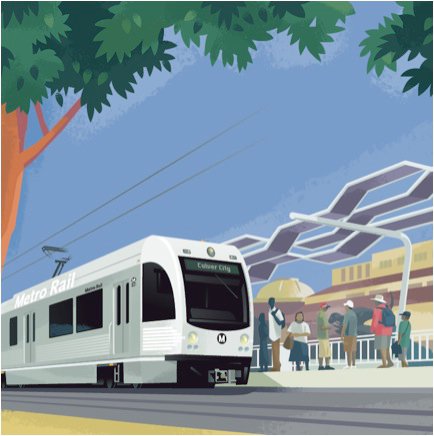SANTA MONICA—On Tuesday, February 22, Superior Court Judge Thomas McKnew dismissed all challenges to the Final Environmental Impact Report (FEIR) for Phase 2 of the Expo Line Rail Project. While Phase 1 of the line travels from Downtown Los Angeles to Culver City, Phase 2 will be elongated by traveling out to Santa Monica. A group by the name of Neighbors for Smart Rail (NFSR), whose objective is to fight the Expo Line from running at street level, created a petition for a Writ of Mandate in order to challenge the Expo Line’s proposed mitigation measures, as well as their FEIR.
Some concerns of the NFSR regarding the completion of Phase 2 of the Expo Line are the future impacts of traffic, noise and air quality in residential neighborhoods. According to a press release made by Chair Board Member of the NFSR, Terri Tippit, “NFSR remains dedicated to making sure that key north/south streets such as Overland and Sepulveda are not blocked 24 times per hour, that West L.A. traffic is not edged closer to gridlock by an ill-conceived light rail plan, that children are not put at risk by trains running just feet from their schools and that first responders will not be hampered by blocked arterials in their efforts to save lives and property.”
Judge McKnew made his final decision to dismiss all legal challenges made to the Expo Line Project’s FIER, including the recirculation for review of the draft environmental impact report (DEIR). Once the verdict had been made, the NFSR made the decision to appeal the judge’s ruling at the appellate court. Tippit stated in the same press release, “NFSR will be filing an appeal and is confident that the appellate court will review the plain facts of the case and find that the Expo environmental review was fatally flawed and must be corrected.”
Expo Government and Community Relations Manager, Gaby Collins, released the following statement to the public, “This ruling confirms the Exposition Metro Line Construction Authority’s (Expo Authority) confidence in the Phase 2 project’s compliance with the California Environmental Quality Act (CEQA). The alternative selected through the environmental review process is the result of many meetings and briefings with communities and key stakeholders, thousands of public comments, and reflects the highest standards for design, public safety and environmental protection.”
The Phase 2 line is expected to be completed and opened for service in 2015.






